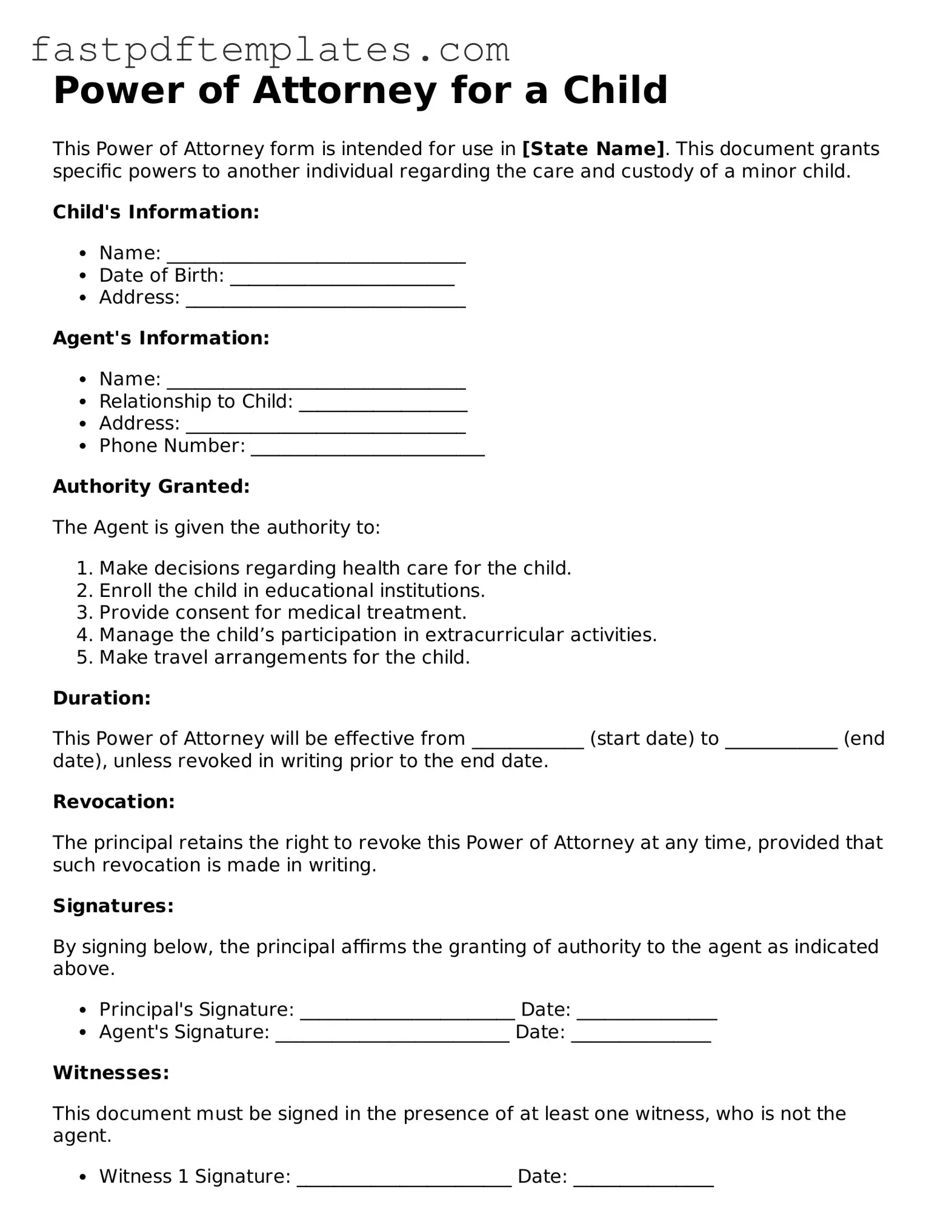The Power of Attorney for a Child form shares similarities with a Medical Power of Attorney. Both documents allow a designated individual to make decisions on behalf of another person, particularly in critical situations. While the Power of Attorney for a Child focuses on general decisions regarding a minor's welfare, the Medical Power of Attorney specifically grants authority to make healthcare-related decisions. This ensures that a trusted individual can act in the best interest of a child when parents or guardians are unavailable, especially in medical emergencies.
Another document that aligns with the Power of Attorney for a Child is the Guardianship Agreement. This legal arrangement appoints a guardian to care for a child in the absence of the parents. Similar to the Power of Attorney, it emphasizes the child's best interests. However, a Guardianship Agreement typically involves a more permanent arrangement, whereas the Power of Attorney is often temporary and can be revoked. Both documents serve to protect the child's welfare, ensuring they have a responsible adult to rely on when needed.
The Child Custody Agreement is also comparable to the Power of Attorney for a Child. This agreement outlines the responsibilities and rights of parents or guardians regarding a child's upbringing. Like the Power of Attorney, it prioritizes the child's needs and establishes who has the authority to make decisions. However, while the Power of Attorney can be limited in scope and duration, a Child Custody Agreement often involves more comprehensive and long-term arrangements regarding living situations and parental responsibilities.
Similar to the Power of Attorney for a Child, the Consent to Travel form allows parents or guardians to grant permission for a child to travel with another adult. This document ensures that the accompanying adult has the legal authority to take the child on trips, whether domestic or international. Both forms provide a way to safeguard a child's well-being by clearly defining who is responsible for the child during specific circumstances, thus preventing potential misunderstandings or legal issues while traveling.
The Affidavit of Support can also be seen as related to the Power of Attorney for a Child. This document is often used when a child is sponsored by an adult for immigration purposes. It establishes the sponsor's financial responsibility for the child, ensuring that the child will not become a public charge. While the Power of Attorney focuses on decision-making authority, the Affidavit of Support emphasizes financial support and stability, both of which are crucial for a child's well-being.
The Temporary Custody Agreement is another document that parallels the Power of Attorney for a Child. This agreement allows a parent or guardian to temporarily transfer custody of a child to another individual. Similar to the Power of Attorney, it is often used in situations where the parent cannot care for the child for a short period. Both documents aim to ensure that the child remains in a safe and nurturing environment, with a trusted adult making decisions on their behalf during the temporary arrangement.
Lastly, the Child Care Authorization form is akin to the Power of Attorney for a Child. This document permits a caregiver, such as a babysitter or daycare provider, to make decisions regarding a child's care. It may cover medical emergencies or other situations where immediate decisions are necessary. Like the Power of Attorney, this form ensures that a responsible adult can act in the child's best interest, emphasizing the importance of having clear authority in caregiving scenarios.
